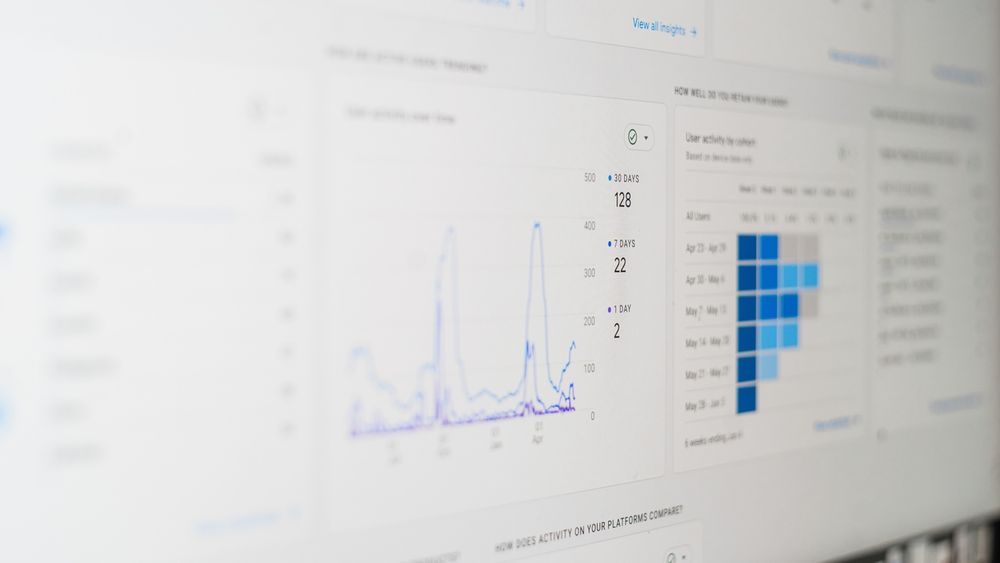
In the world of digital marketing and SEO, understanding how to perform a competitor SERP analysis is a crucial skill.
By analyzing the Search Engine Results Pages (SERPs), you can gain valuable insights into your competitor's strategies, discover opportunities for improvement, and ultimately boost your website's visibility and traffic.
What is SERP Analysis?
When delving into the realm of digital marketing and search engine optimization (SEO), it's essential to understand the significance of SERP analysis, or Search Engine Results Page analysis. This process involves examining the search engine results pages of platforms like Google to gain valuable insights into the performance and strategies of your competitors. Let's break down the key components of SERP analysis:
Insight into Google SERPs
SERP analysis primarily focuses on Google's search engine results pages. Google is the dominant player in the search engine market, making it the primary battleground for SEO professionals and website owners. By scrutinizing these pages, you can understand how your website and those of your competitors are performing in the eyes of Google's algorithms.
Understanding User Intent
One fundamental aspect of SERP analysis is understanding user intent. When users type a query into a search engine, they have a specific intent in mind. It might be informational, navigational, or transactional. Analyzing SERPs allows you to decipher what Google believes the user intent is for a given keyword. By understanding this intent, you can tailor your content and SEO strategy to better meet the needs of your target audience.
Importance of SERP Analysis
The importance of SERP analysis cannot be overstated in the world of SEO. It serves as a cornerstone for making informed decisions about your website's optimization. Here are some key reasons why SERP analysis is crucial:
Competitive Insights: By studying your competitors' presence on SERPs, you can identify their strengths and weaknesses. This knowledge enables you to refine your SEO strategy and potentially outrank them.
Keyword Research: SERP analysis aids in identifying relevant keywords and assessing their competitiveness. This information is invaluable for crafting a robust keyword strategy.
Content Optimization: Understanding what content types and formats appear on SERPs for specific queries helps you create content that aligns with user expectations and trends.
Tracking Performance: Regular SERP analysis allows you to monitor the effectiveness of your SEO efforts and make necessary adjustments to maintain or improve your search engine ranking.
What is Competitive SERP Analysis?
Competitive SERP analysis, also known as Competitive Search Engine Results Page analysis, is a strategic process that involves examining and evaluating the search engine results pages (SERPs) of your competitors.
In essence, it's about dissecting and understanding how your rivals are performing in the digital realm and using that knowledge to enhance your own search engine optimization (SEO) efforts.
Competitive SERP analysis is a multidimensional approach that goes beyond merely checking where your competitors' websites rank on search engines. It delves into the finer details, uncovering the tactics and strategies that contribute to their success. Here's a breakdown of why this concept is essential:

Understanding the Concept
Competitive SERP analysis is all about gaining a comprehensive understanding of what your competitors are doing to achieve visibility in search engine results.
- Keyword Strategies: Analyzing the keywords your competitors are targeting, how they use them in their content, and their keyword ranking positions.
- Content Types: Identifying the types of content that appear on SERPs for specific queries, whether they are blog posts, videos, images, or other media.
- User Intent: Determining what user intent each search query is serving and tailoring your content and strategy accordingly.
- Backlink Profiles: Examining the quality and quantity of backlinks pointing to your competitors' websites.
- On-Page SEO: Scrutinizing on-page elements such as title tags, meta descriptions, and headings to understand their optimization techniques.
- Featured Snippets: Investigate if your competitors' content appears in featured snippets or other rich results, which can drive more organic traffic.
Why Competitive SERP Analysis is Crucial
Competitive SERP analysis is crucial for several reasons:
1. Informing Strategy: It provides critical data to refine your SEO strategy. By learning from the successes and failures of your competitors, you can make informed decisions about your own tactics.
2. Staying Competitive: In the ever-evolving landscape of digital marketing, staying competitive is vital. Knowing what works for your rivals can help you remain relevant and competitive.
3. Discovering Opportunities: Competitive SERP analysis reveals gaps and opportunities in the market. By identifying keywords and content areas where your competitors are underperforming, you can target these areas to gain an advantage.
4. Improving Content: By understanding the content types and formats that resonate with your target audience, you can create more engaging and effective content.
5. Enhancing User Experience: Tailoring your strategy to match user intent improves the overall user experience, which can lead to higher click-through rates and user satisfaction.
In summary, competitive SERP analysis is a strategic practice that enables you to gain insights from your competitors' search engine rankings and tactics. It's a powerful tool for fine-tuning your SEO strategy, remaining competitive, and seizing opportunities in the dynamic world of digital marketing.

Define Target Keywords
Before delving into the world of competitive SERP analysis, it's imperative to define your target keywords. These keywords are the foundation upon which your analysis and SEO strategy will be built. Here's how to go about it:
Perform Keyword Research
Start by conducting thorough keyword research. This involves identifying the specific search terms or phrases that are relevant to your industry, products, or services. Utilize keyword research tools like Google Keyword Planner, SEMrush, or Ahrefs to discover keywords that have search volume and align with your business objectives. Look for a mix of short-tail and long-tail keywords to diversify your strategy.
Also see: Ahrefs vs Semrush: Which Is a Better SEO Tool?
Ensuring Keyword Relevancy
It's not just about finding keywords with high search volume; you must ensure they are relevant to your business. Relevancy is key to attracting the right audience. Consider the intent behind the keywords you've selected. Are they aligned with the content and solutions you offer? If not, it's essential to refine your keyword list to match the needs and expectations of your potential customers.
Check Keyword Difficulty
Keyword difficulty is a metric that indicates how challenging it is to rank for a specific keyword. While targeting highly competitive keywords can be tempting, it's often more effective to focus on keywords with a manageable difficulty level, especially if you're in a competitive niche. Tools like Moz and SEMrush can help you assess keyword difficulty and make informed decisions about which keywords to target.
Finding Keyword Opportunities
In addition to assessing difficulty, look for keyword opportunities. These are keywords that present a chance to rank well and attract a significant amount of organic traffic. Identifying low-hanging fruit can be a strategic advantage. Keyword opportunities may include long-tail keywords, emerging trends, or areas where your competitors are underperforming.
Defining your target keywords and conducting comprehensive keyword research is the initial step in your competitive SERP analysis journey. It lays the groundwork for understanding what your audience is searching for and how you can tailor your content and SEO strategy to meet those needs effectively. Once you have your keywords in place, you'll be well-prepared to move on to the next stages of analysis and optimization.

Understand the SERP Intent
To conduct a successful competitor SERP analysis, it's vital to understand the intent behind the Search Engine Results Page (SERP) for your target keywords. This insight will guide your content creation and SEO efforts. Here's how to get a grasp on SERP intent:
Identify Search Intent
Begin by identifying the search intent behind the keywords you've selected. Search intent typically falls into four main categories:
- Informational Intent: Users are looking for information or answers to their questions.
- Navigational Intent: Users are seeking a specific website or webpage.
- Commercial or Transactional Intent: Users are ready to make a purchase or take a specific action.
- Local Intent: Users are searching for nearby businesses or services.
Understanding the intent allows you to tailor your content to meet user expectations. For instance, if the intent is informational, your content should provide valuable insights or answers. If it's transactional, your content should encourage action or purchasing.
Presence of SERP Features
Next, assess the SERP for your target keywords to identify the presence of SERP features. These features can include featured snippets, knowledge panels, image carousels, local pack listings, and more. The presence of these features indicates what Google believes is the most relevant format for a particular keyword.
By recognizing these features, you can adapt your content strategy to align with what Google displays prominently. For instance, if a featured snippet appears, aim to create content that directly answers the query, increasing your chances of being featured.
Local Search Intent in SERPs
If your business serves a local audience, it's crucial to recognize local search intent within SERPs. Local pack listings and Google Maps results are typical indicators of local intent. To leverage this, ensure that your business information is up-to-date on Google My Business and that your website is optimized for local SEO. Understanding the prevalence of local search intent helps you connect with local customers effectively.
By understanding the SERP intent for your target keywords, you'll be better equipped to tailor your content and SEO strategy to meet the specific needs of your target audience. This ensures that your efforts align with what users are looking for when they enter their queries into search engines, ultimately improving your chances of ranking well and attracting organic traffic.

Analyze SERPs for Target Keywords
Now that you've defined your target keywords and gained an understanding of SERP intent, it's time to dive into the core of competitor SERP analysis: examining the Search Engine Results Pages (SERPs) for those keywords. This process involves several key steps to ensure a comprehensive analysis:
How to Conduct SERP Analysis
Observe the Top Results
Start by examining the top-ranking pages on the SERP. Pay attention to their content, format, and the presence of any featured snippets, knowledge panels, or other SERP features.
Content Analysis
Analyze the content quality and depth. Are the top-ranking pages providing in-depth, informative, and valuable content? How are they structured? What media types (text, images, videos) do they incorporate?
Backlink Profiles
Investigate the backlink profiles of the top-ranking pages. Tools like Ahrefs or Moz can help you assess the quality and quantity of backlinks. Understanding the link-building strategies of your competitors can inform your own efforts.
On-Page SEO
Scrutinize on-page elements such as title tags, meta descriptions, headings, and keyword usage. Are the top-ranking pages optimizing these elements effectively?
User Experience
Evaluate the user experience provided by the top-ranking pages. Are they mobile-friendly? Is the content easy to read and navigate?
Local SERPs
If your business has a local focus, pay close attention to local SERP features. Check for the presence of the local pack, Google Maps results, and Google My Business listings.
Tools to Use for SERP Analysis
To conduct effective SERP analysis, you can leverage various SEO tools. Some of the popular options include:
SEMrush: SEMrush provides comprehensive insights into the SERPs, including organic search results, featured snippets, and paid ads. It also offers competitor analysis tools.
Ahrefs: Ahrefs is known for its backlink analysis capabilities but also provides data on organic search results and keyword rankings.
Moz: Moz offers tools to help you assess keyword difficulty and conduct SERP analysis, including on-page and backlink insights.
Google Search: Don't underestimate the power of manual observation. Regularly searching for your target keywords on Google allows you to see the SERPs in real time and understand what's currently ranking.
Also see:
1. Semrush SEO Product Tour, Reviews & More 2023
2. Ahrefs SEO Product Tour, Reviews & More 2023
3. Moz SEO Product Tour, Reviews & More 2023
Quick SERP Analysis: Keyword Overview and Difficulty
A quick SERP analysis involves checking the keyword overview and difficulty for your target keywords. This gives you a snapshot of the competitive landscape.
- Search Volume: Understand how often your target keywords are searched. High search volume indicates more potential traffic.
- Keyword Difficulty: Assess the keyword difficulty, which indicates how tough it is to rank for a particular keyword. This data helps you prioritize your SEO efforts.
Using Position Tracking as a Daily Local SERP Checker
For businesses with a local focus, daily position tracking is essential. Tools like Moz or Ahrefs can help you track your website's ranking for local keywords over time. This daily tracking allows you to monitor your progress, adapt your strategies, and stay ahead in the local SERPs.
Also see: SERP Analysis Tools
By following these steps and utilizing the right tools, you can effectively analyze the SERPs for your target keywords. This knowledge is invaluable for refining your SEO strategy, outperforming your competitors, and achieving better visibility in search engine results.

Pay Attention to SERP Features
As you continue your competitor SERP analysis journey, it's crucial to pay close attention to the SERP features that appear for your target keywords. These features can significantly impact your SEO strategy and user engagement. Here's why SERP features matter:
Importance of SERP Features
SERP features are elements beyond the traditional organic search results that Google displays to enhance user experience and provide more direct answers to queries. They can include:
- Featured Snippets: These are concise, highlighted answers to specific questions, often appearing at the top of the SERP.
- Knowledge Panels: These provide detailed information about a subject, entity, or location, appearing in a box on the right-hand side of the SERP.
- Image Carousels: A series of images displayed horizontally at the top of the SERP, commonly used for image-related queries.
- Local Pack: A list of businesses or locations related to a local search query, typically displayed with a map.
- Videos: Google may include video results for queries that have video content available.
- News and Top Stories: These SERP features show the latest news articles related to a query.
Understanding the presence and prominence of these features on the SERPs for your target keywords is essential for several reasons:
- Optimization Opportunities: SERP features offer additional opportunities to increase your website's visibility. For instance, optimizing your content to secure a featured snippet can place you at the top of the search results.
- User Engagement: SERP features can enhance user engagement by providing immediate, relevant information. Appearing in featured snippets or knowledge panels can attract more clicks.
- Competition Analysis: Analyzing which SERP features appear for your competitors can reveal their strengths and strategies. This insight can guide your own efforts.
- Tailoring Content: Identifying which SERP features dominate for specific keywords allows you to tailor your content to align with user preferences and expectations.

In-depth SERP Analysis: Studying Content and SERP Features
In-depth SERP analysis involves a detailed examination of the content, and SERP features on the search results pages for your target keywords. Focus on the following aspects:
- Featured Snippets: Are there featured snippets, and what type of questions do they answer? Tailor your content to address similar queries comprehensively.
- Knowledge Panels: Understand the information presented in knowledge panels. If your brand or business is the subject of a knowledge panel, ensure the information is accurate and up-to-date.
- Image Carousels: If images are prominent, consider optimizing your content with relevant images and alt text.
- Local Pack: For local businesses, ensure that your Google My Business listing is complete and optimized for local SEO.
- Videos: Assess if video results are present and consider incorporating video content into your strategy if relevant.
- News and Top Stories: Stay updated on the latest news related to your industry or niche. This can help you create timely, relevant content.
Utilize SERP Gap Analyzer to Define Your Opportunities
To effectively utilize SERP features to your advantage, consider using a SERP gap analyzer tool. These tools help you identify gaps and opportunities in the SERPs for your target keywords. They can highlight keywords where you're missing out on featured snippets or knowledge panel placements and guide your content optimization efforts.
By paying attention to SERP features, you can adapt your content and SEO strategies to take full advantage of these elements, enhance user engagement, and outperform your competitors in the dynamic world of search engine results.

SERP Competitive Analysis
Understanding how to perform a thorough SERP competitive analysis is a cornerstone of successful SEO. This process empowers you to keep a close eye on your competitors, gain insights, and adapt your strategies for improved visibility in search engine results. Here's how to monitor and level up your SERP competitive analysis:
How to Monitor Competitive SERP?
1. Competitor Selection: Begin by selecting your primary competitors. These are the businesses or websites that operate within your niche or target the same keywords.
2. Keyword Tracking: Utilize SEO tools like SEMrush, Ahrefs, or Moz to track the keyword rankings of both your website and your competitors. By comparing these rankings, you can identify areas where you need to improve.
3. Content Assessment: Analyze the content strategies of your competitors. What type of content are they producing, and how does it perform? Are there gaps or opportunities in the content landscape that you can exploit?
4. Backlink Analysis: Examine the backlink profiles of your competitors. Tools like Ahrefs or Majestic can help you identify their high-quality backlinks. This information can guide your own link-building efforts.
5. SERP Features: Keep an eye on the SERP features that appear for your target keywords. Understanding the prevalence of featured snippets, knowledge panels, and other elements can help you optimize your content accordingly.
Tips to Level Up Your SERP Competitive Analysis
Regular Updates: Competitive analysis is an ongoing process. Keep your data up-to-date to stay informed about changes in rankings, content, and backlinks among your competitors.
Benchmarking: Set specific performance benchmarks based on your competitors' rankings, content quality, and backlink profiles. This helps you measure your progress over time.
Adaptation: Use the insights from your analysis to adapt your SEO and content strategies. If a competitor is outranking you for a valuable keyword, develop a plan to improve your position.
Content Differentiation: Differentiate your content from that of your competitors. Create high-quality, unique content that addresses user intent and provides additional value.
Continuous Learning: Stay informed about the latest SEO trends and updates. The SEO landscape evolves, and staying current is essential for maintaining a competitive edge.

Applying SERP Knowledge to Optimization
Once you've gathered valuable insights through competitive SERP analysis, it's time to put that knowledge to work in optimizing your website's performance in search results:
Use the Acquired Data for the Optimization
Keyword Optimization
Identify opportunities to target keywords that your competitors are ranking for. Optimize your content, metadata, and headings accordingly.
Content Improvement
Create content that surpasses that of your competitors in terms of depth, value, and user experience. Address user intent comprehensively.
Backlink Strategy
Leverage the backlink insights from your analysis to build high-quality backlinks to your website. This can enhance your authority and ranking.
SERP Feature Optimization
Tailor your content to appear in SERP features like featured snippets. Provide concise, direct answers to user queries to increase your chances of being featured.
Follow-up Through Tracking the SERPs
Continuously track the SERPs to monitor the impact of your optimization efforts. SEO is an ongoing process, and regular SERP tracking allows you to assess the effectiveness of your strategies. Adjust your tactics as needed based on the results and the changing competitive landscape.
By applying the knowledge gained from your SERP competitive analysis and adapting your optimization strategies, you can enhance your website's visibility, attract more organic traffic, and stay ahead in the competitive world of search engine results.

Benefits of SERP Analysis
Competitive SERP analysis offers a wealth of benefits for businesses and website owners looking to enhance their online presence and outperform competitors. Let's explore how it can win you new business, boost your performance marketing efforts, and give you a competitive edge in 2023.
How it Wins New Business
Competitive SERP analysis is a powerful tool for attracting new customers and clients. Here's how it can help you win new business:
- Understanding Your Audience: Through SERP analysis, you gain insights into the questions and topics that matter most to your target audience. By addressing these needs with your content, you can attract and engage potential customers.
- Content Relevance: By aligning your content with user intent, you provide valuable solutions and answers to search queries. This not only helps your website rank higher but also builds trust and credibility with your audience, making them more likely to choose your business.
- Local SEO Advantage: For businesses targeting local markets, SERP analysis can reveal the local intent behind specific search queries. Optimizing for local SEO can put you ahead of the competition when potential customers search for nearby services.

Its Effect on Boosting Performance Marketing
SERP analysis is a game-changer in the world of performance marketing.
Data-Driven Decision Making: SERP analysis provides you with data that informs your marketing strategies. You can focus your efforts on keywords and content that have the potential to generate more traffic and conversions.
Competitive Benchmarking: By understanding the strategies and tactics of your competitors, you can benchmark your performance against theirs. This competitive insight enables you to identify areas for improvement and make data-backed decisions.
Optimizing Ad Campaigns: For businesses using paid advertising, SERP analysis can guide your ad campaign strategy. You can identify high-value keywords and create more effective ad copy by understanding what competitors are doing in the paid search space.
Gaining an Edge in 2023: Competitive SERP Analysis and SEO Must-Haves
In the dynamic landscape of SEO and online marketing, staying ahead is crucial. In 2023, competitive SERP analysis is a must-have for gaining a competitive edge.
Algorithm Updates: Search engine algorithms are constantly evolving. By analyzing SERPs, you can adapt to algorithm changes and stay in sync with what search engines prioritize.
User Expectations: User behavior and expectations change over time. SERP analysis helps you identify and meet these evolving needs, ensuring your website remains user-friendly and relevant.
Content Trends: Content trends and formats can shift rapidly. SERP analysis keeps you informed about what types of content are currently resonating with your audience, enabling you to create content that stands out.
Competitive Landscape: Your competitors are continuously refining their SEO strategies. Staying updated on their tactics allows you to stay one step ahead in the competitive race.
In summary, competitive SERP analysis is a game-changing strategy that offers significant advantages. It can win you new business by understanding your audience, boost your performance marketing efforts through data-driven decision-making, and give you a competitive edge in the ever-evolving digital landscape of 2023.

Realistic Expectations After SERP Analysis
Competitor SERP analysis is a powerful tool for improving your website's performance and SEO strategies, but it's important to set realistic expectations for the outcomes of your efforts. Here's what you can realistically expect after conducting SERP analysis:
By gaining insights into your competitors' strategies and the search engine landscape, you can make informed decisions to improve your SEO tactics. This may include refining your keyword targeting, creating more engaging content, or optimizing your website's technical aspects.
While these changes can lead to improved search engine rankings and organic traffic, it's crucial to remember that SEO is a long-term endeavor. Immediate, drastic changes are uncommon, and it may take several weeks or months to see significant results.
What's a Unique Selling Proposition?
A Unique Selling Proposition (USP) is a critical concept to consider after conducting a SERP analysis. A USP sets your business or website apart from the competition and gives customers a compelling reason to choose you over others.
SERP analysis can help you identify gaps and opportunities in the market, which can be the foundation for your USP.
Identify Competitor Weaknesses: SERP analysis allows you to spot areas where your competitors may be falling short. Use this information to position your business as the solution to the problems your competitors aren't addressing.
Highlight Your Strengths: Emphasize the strengths and unique qualities of your business in your marketing efforts. This might include exceptional customer service, unique product features, or a distinctive brand identity.
Tailor Content to Your USP: Create content that aligns with your USP and showcases the benefits of choosing your business. This content can be optimized to rank well in search results, drawing in potential customers who resonate with your unique selling proposition.
Sharpened Vision for Further Strategies and Steps
SERP analysis provides you with a clearer and sharper vision for your future SEO strategies and steps. It helps you understand your competitive landscape, user intent, and market opportunities. With this refined vision, you can take the following steps:
1. Content Planning
Use the insights from SERP analysis to plan your content strategy. Create content that addresses the needs and questions of your target audience, aligning with user intent and preferences.
2. Link Building
Develop a link-building strategy based on your analysis. Identify high-quality backlink opportunities that can enhance your website's authority and improve its search engine ranking.
3. Monitoring and Adaptation
Continuously monitor your SEO performance and make necessary adaptations. SEO is an ever-changing field, and staying agile and adaptable is key to long-term success.
4. Brand Building
SERP analysis can reveal how your brand is perceived online. Use this information to enhance your brand's online presence and reputation.
Conclusion
In conclusion, mastering the art of competitor SERP analysis is a key strategy for businesses and website owners aiming to thrive in the competitive world of online marketing. This process offers a multitude of advantages, from understanding your competition and user intent to optimizing your content and strategies. Here are the key takeaways from this comprehensive guide:
- Competitive Edge: SERP analysis empowers you to gain a competitive edge by identifying your competitors' strengths and weaknesses. This information allows you to refine your strategies for better performance.
- User-Centric Approach: Understanding user intent is at the core of successful SEO. By tailoring your content to address the needs and questions of your target audience, you can enhance user experience and attract more organic traffic.
- Data-Driven Decisions: SERP analysis provides invaluable data that guides your decision-making. It helps you identify high-value keywords, assess your competitive landscape, and optimize your website for better rankings.
- Adaptability: SEO is an ever-evolving field. SERP analysis enables you to stay agile and adapt to changes in algorithms, user behavior, and market trends.
- Unique Selling Proposition: Your USP sets you apart in a crowded market. SERP analysis helps you identify opportunities for differentiation and develop a compelling USP to attract and retain customers.
In the fast-paced world of SEO, staying informed and adaptable is key. By applying the knowledge and practices discussed in this article, you're well-equipped to excel in the ever-evolving landscape of search engine results. As you put these insights into action, may your website rise in the rankings and your digital presence shine brighter than ever before.

